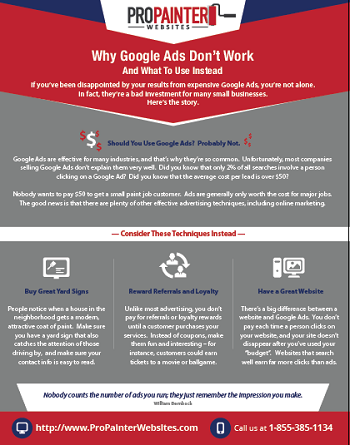Examine The Function Of Seasonal Factors In The Success Of Business External Painting And Uncover The Very Best Times To Safeguard Lasting Results For Your Project
Examine The Function Of Seasonal Factors In The Success Of Business External Painting And Uncover The Very Best Times To Safeguard Lasting Results For Your Project
Blog Article
Short Article Author-Leach Chaney
When you're planning an industrial outside painting task, seasonal aspects can make or break your outcomes. You'll want to think about how temperature level and humidity impact paint application and drying out times. Selecting the best season can ensure your paint adheres properly and lasts much longer. However which periods are absolutely the best for this sort of work? Allow's discover the key elements that can impact your task's success.
The Influence of Temperature Level on Paint Application
When you're planning a commercial outside painting job, the temperature level can substantially affect exactly how well the paint sticks and dries out.
Ideally, you want to repaint when temperature levels vary between 50 ° F and 85 ° F. If it's too cool, the paint may not cure correctly, bring about problems like peeling off or cracking.
On the other side, if it's as well warm, the paint can dry also promptly, avoiding correct attachment and resulting in an unequal coating.
You ought to also consider the moment of day; morning or late afternoon supplies cooler temperature levels, which can be extra desirable.
Constantly examine the producer's recommendations for the certain paint you're using, as they usually offer guidance on the perfect temperature range for optimal results.
Humidity and Its Effect on Drying Times
Temperature level isn't the only ecological element that affects your industrial outside paint task; moisture plays a considerable role too. High moisture levels can reduce drying times considerably, affecting the total quality of your paint job.
When the air is saturated with dampness, the paint takes longer to heal, which can lead to concerns like poor adhesion and a greater risk of mold growth. If you're repainting on an especially damp day, be prepared for extensive wait times between coats.
It's important to monitor local weather conditions and strategy appropriately. Preferably, go for humidity levels in between 40% and 70% for optimum drying out.
Keeping these factors in mind guarantees your task remains on track and supplies a long-term finish.
Best Seasons for Commercial Outside Painting Projects
What's the very best time of year for your commercial external painting tasks?
relevant website and very early fall are generally your best choices. During these seasons, temperatures are moderate, and humidity levels are typically lower, creating suitable conditions for paint application and drying out.
Prevent summer's intense heat, which can create paint to dry as well quickly, causing inadequate attachment and coating. Similarly, winter months's cold temperature levels can impede correct drying and curing, taking the chance of the long life of your paint work.
Go for days with temperature levels between 50 ° F and 85 ° F for optimal outcomes. Keep in mind to examine the local weather prediction for rain, as damp problems can wreck your project.
Preparation around these factors ensures your paint task runs smoothly and lasts longer.
Final thought
In conclusion, planning your commercial external painting projects around seasonal considerations can make a considerable difference in the end result. By organizing commercial painting in okc throughout the optimal temperature levels and moisture degrees, you'll make certain far better attachment and drying out times. Keep in mind to keep an eye on local weather report and pick the right time of year-- springtime and early loss are your best choices. Taking these steps will assist you achieve a long lasting and specialist coating that lasts.
